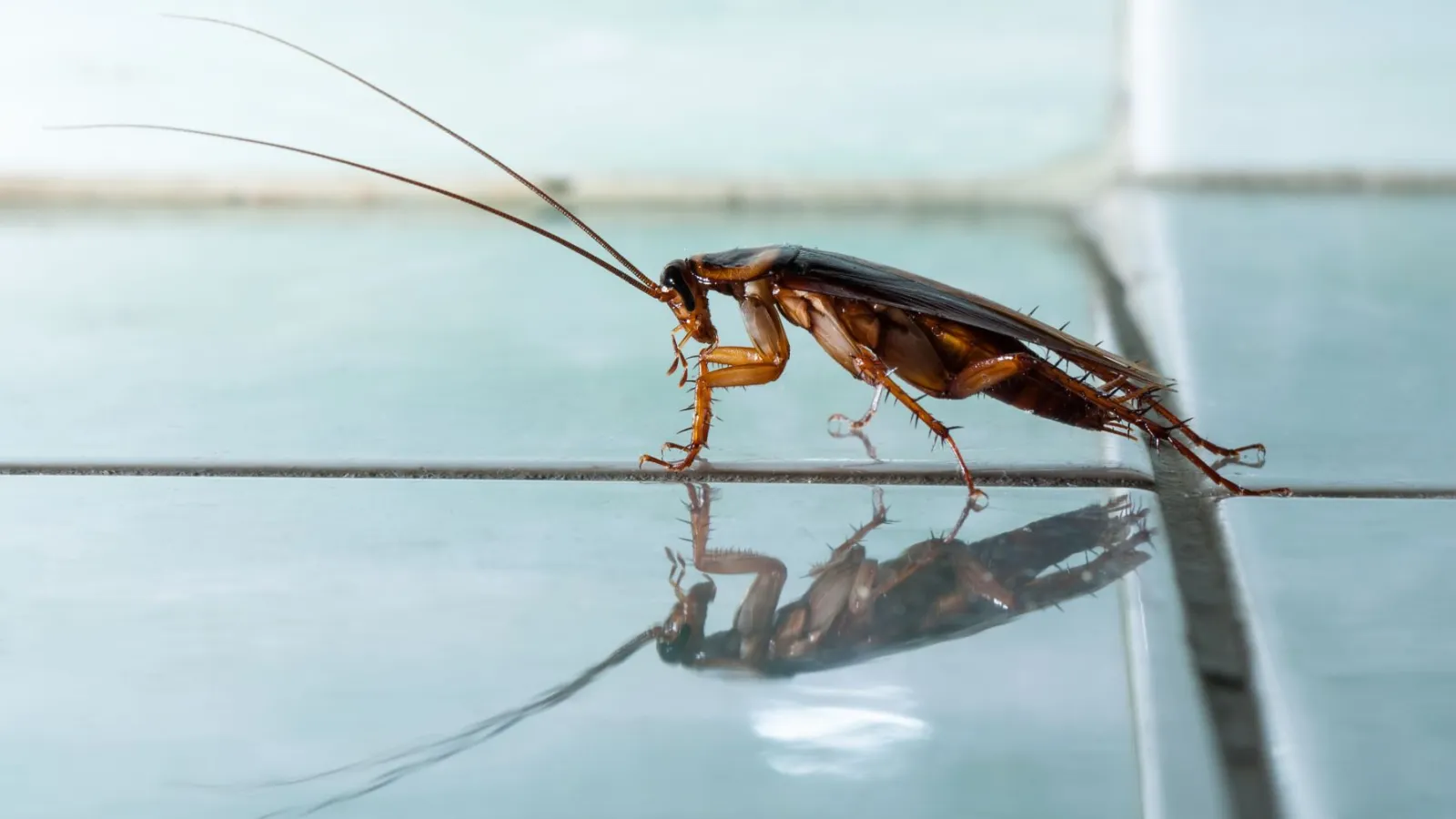
Cockroaches
What You Need To Know
Cockroaches have been around for millions of years, evolving into some of the most adaptable pests on Earth. There are approximately 4,000 living species of cockroaches in the world and about 70 of these species are found in the United States. Once the cockroach species is properly identified, specific control measures can be performed by your pest control professional.
It's important to not let cockroach issues go unattended as they can multiply rapidly if not treated. The "skins" or molts cockroaches shed during their lifecycle can also be particularly problematic for individuals with certain allergies or asthmatic concerns. Cockroaches are also known to carry a wide range of diseases, so this is one pest you do not want to leave untreated in your home.
Types of Cockroaches

- Size: 1-3"
- Reddish-brown with a yellow band outline behind the head. Large common-cockroach species commonly referred to as a "water bug" or "palmetto bug." Prefer to live outside in habitats that offer plenty of food and water, however, they will occasionally find their way into structures. Preventative measures include good sanitation control, debris removal in the yard (including leaves that have fallen) also, cracks and crevices repair and reseal to limit access. They are attracted to light at night, so keeping outside lights off will assist in not attracting them towards the home.

- Size: 1 ¼ - 2"
- Mahogany brown in color. Slightly smaller than the American Cockroach and typically found outside. Excellent flier that easily travels from tree to tree. Can be attracted to a structure with subpar sanitation measures, if found inside, it is typically found in attics and crawl spaces. Proper ventilation of attic and crawl spaces will help to keep them out as they prefer higher humidity; cracks and crevices may also need to be repaired and resealed. Baits work well as they scavenge for food.

- Size: ½-1"
- Tan to black in color with two nearly parallel bands that run from the back of the head to the base of the wings. Like most roaches, they will eat just about anything. Commonly found indoors around kitchen and bathrooms; prefer tight-fitting spaces to hide and harborage in. Reproduce rapidly in large numbers. Keeping kitchen and baths wiped dry and clean along with proper sanitation measures is best practice to keep them out of the home. Once infestation occurs in the home, professional measures are often needed to get the population under control thresholds.

- Size: ½-⅝"
- Light gold to glossy dark brown in color with yellow bands across base of wings and abdomen. More likely to be found in homes, apartments, hospitals, nursing homes than restaurants and grocery stores. Have lower water requirements than other roaches and they prefer starchy foods. Treating cracks and crevices is best practice for control measures.

- Size: 1"
- Shiny Black in coloration. Sometimes referred to as "waterbugs" because they hang out in damp areas, as well as "black beetle cockroaches" because of their smooth, dark bodies. Oriental cockroaches gain entry into households by going under doors and through gaps beneath siding, as well as following pipes, sewers, and drains into a structure.
Quick Fact
Since cockroaches breathe air through tubes on their bodies called spiracles, they can, in fact, live without a head for several weeks until they die of starvation.



